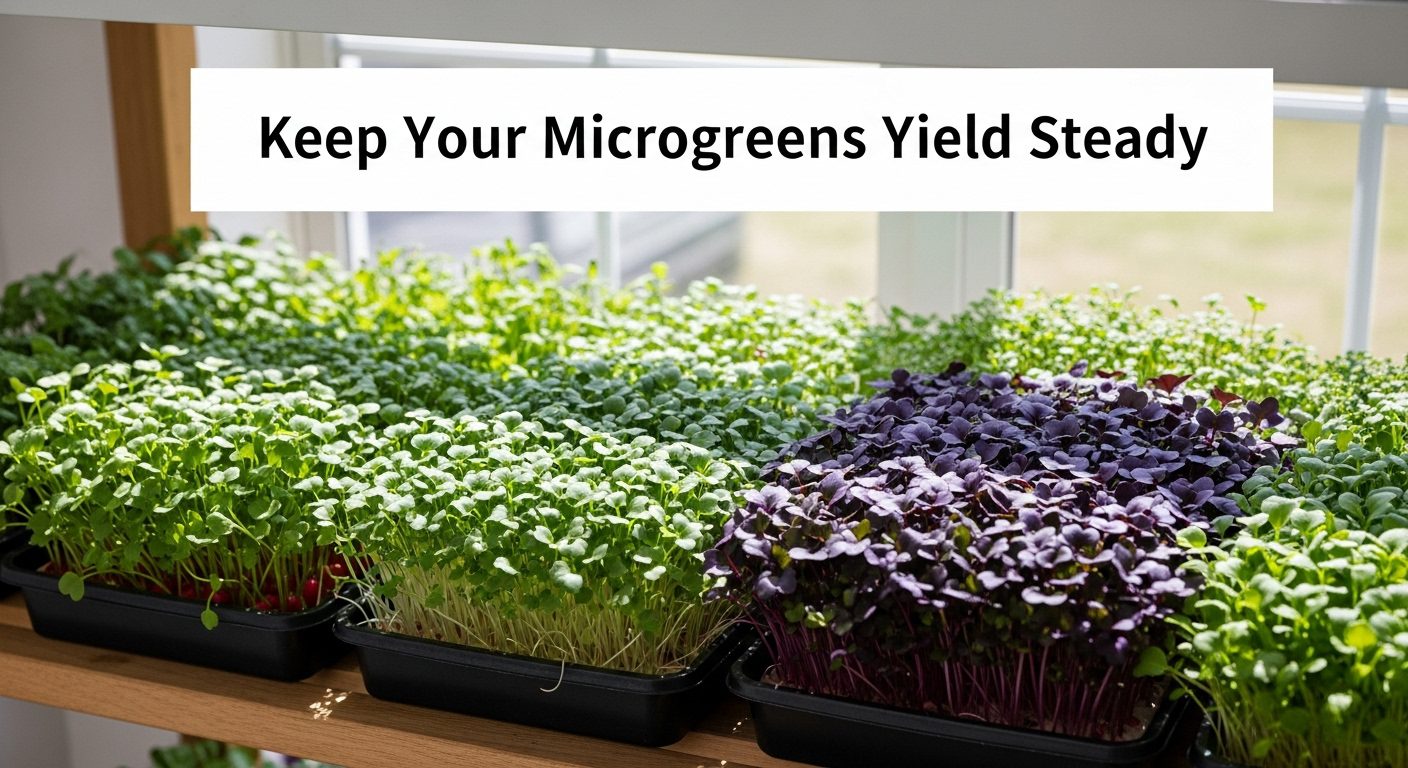
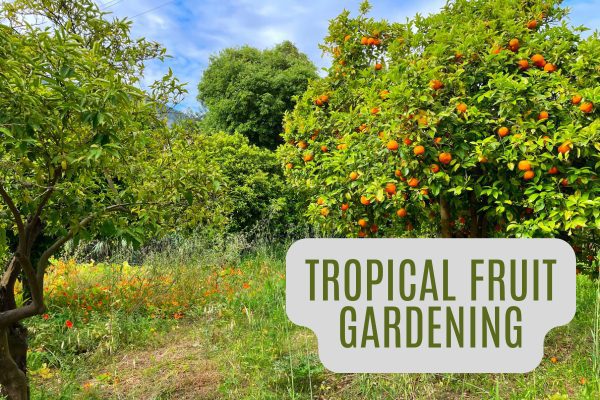
Imagine plucking a ripe mango from your own tree in Michigan or harvesting fresh pineapples in your Portland backyard. While this might sound like a fantasy, thousands of gardeners are already enjoying tropical fruit gardening far from the equator.
Most gardeners assume tropical fruits are impossible to grow outside zones 9-10, missing out on these delicious and rewarding plants. The truth is, you can successfully grow tropical fruits anywhere by using container gardening, creating microclimates, and choosing the right varieties—even in zones as cold as 4. Whether you want to grow a garden tropical fruits collection indoors or establish a thriving outdoor tropical paradise, the key lies in understanding each plant’s needs and adapting your approach.
This comprehensive guide covers everything from selecting easy tropical fruit varieties to advanced care techniques, troubleshooting common problems, and harvesting your exotic bounty. You’ll discover which tropical fruits grow a garden can support year-round, learn proven container techniques, and master the art of creating your own slice of the tropics.
Choosing the right varieties sets the foundation for successful growing tropical fruits in home gardens. Not all tropical fruits are created equal when it comes to adaptability and ease of care.
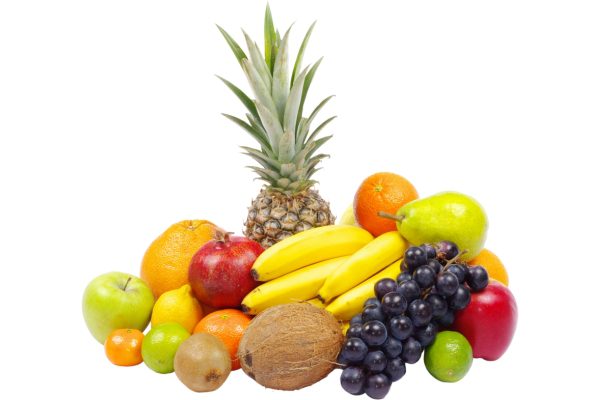
Start your tropical journey with forgiving varieties that adapt well to container culture. Guava stands out as an easy tropical fruit bush to grow, tolerating temperature fluctuations better than most tropicals. The strawberry guava variety stays compact at 4-6 feet and produces sweet, vitamin C-rich fruits within two years.
Dwarf banana plants offer instant tropical appeal with their bold foliage. The ‘Super Dwarf Cavendish’ reaches only 4-6 feet tall and can fruit in just 12-18 months. These plants thrive in large containers and actually prefer the controlled environment indoor growing provides.
Pineapples surprise many gardeners with their adaptability. You can even start one from a grocery store pineapple top. They require minimal space, tolerate dry air better than most tropicals, and produce fruit in 18-24 months when grown in containers.
Citrus trees bridge the gap between true tropicals and temperate fruits. Meyer lemons lead the pack for container growing, producing fragrant flowers and juicy fruits year-round indoors. Their naturally compact size and tolerance for indoor conditions make them perfect for beginners.
Kumquats offer unique appeal with edible sweet peels and tart flesh. The ‘Nagami’ variety stays under 6 feet in containers and produces abundant fruit. These hardy citrus tolerate temperatures down to 28°F briefly, giving you more flexibility.
Calamondin oranges combine ornamental beauty with culinary value. Their small, tart fruits work wonderfully in Asian cuisine and beverages. The plants remain compact at 3-4 feet and fruit prolifically even in small pots.
Once you’ve mastered the basics, challenge yourself with premium tropical fruits. Mangoes can thrive in containers with proper variety selection. The ‘Glen’ mango stays under 10 feet and fruits within 3-4 years. These trees need consistent warmth and high humidity but reward dedicated gardeners with incomparable fruit.
Avocados present unique challenges but aren’t impossible in containers. The ‘Wurtz’ or ‘Little Cado’ varieties stay manageable and can fruit in 3-5 years. They need excellent drainage and consistent moisture to thrive.
Jackfruit, the world’s largest tree fruit, might seem impossible for containers, but dwarf varieties exist. While you won’t get 75-pound fruits, container-grown jackfruits can produce 10-20 pound fruits with proper care.
| Fruit Type | Difficulty | Container Size | Time to Fruit | Min Temp |
| Meyer Lemon | Easy | 5-10 gallons | 1-2 years | 50°F |
| Dwarf Banana | Easy | 20+ gallons | 12-18 months | 55°F |
| Pineapple | Easy | 5 gallons | 18-24 months | 60°F |
| Guava | Moderate | 15-20 gallons | 2-3 years | 45°F |
| Dwarf Mango | Advanced | 25+ gallons | 3-4 years | 55°F |
| Avocado | Advanced | 25+ gallons | 3-5 years | 60°F |
Your climate zone determines your approach to growing tropical fruits in home gardens, but don’t let a cold zone discourage you. With the right strategies, gardeners everywhere can enjoy tropical harvests.
Cold-climate gardeners must embrace container culture and indoor overwintering. Focus on the most cold-tolerant varieties and invest in proper indoor growing spaces. A sunny south-facing window provides the minimum light needed, though grow lights from the University of Missouri Extension can dramatically improve results.
Create dedicated overwintering spaces with consistent temperatures above 55°F. Basements with grow lights, heated sunrooms, or spare bedrooms near south windows work well. Group plants together to create humid microclimates and reduce heating costs.
Summer becomes your secret weapon. Move containers outdoors after nighttime temperatures consistently stay above 50°F. The intense summer sun and natural humidity accelerate growth, often triggering flowering and fruiting. Just remember to transition plants gradually over 7-10 days to prevent shock.
Gardeners in zones 8-9 enjoy more options for tropical fruits grow a garden can support. Many tropical fruits survive outdoors with winter protection, expanding your possibilities beyond containers.
In-ground planting becomes possible for hardy varieties like loquats, cold-hardy bananas, and some guavas. Choose protected locations near south-facing walls that radiate stored heat at night. Mulch heavily before winter and be prepared with frost cloth for unexpected cold snaps.
Container growing still offers advantages in these zones. You can grow more tender varieties and move them during extreme weather. The ability to control water and nutrients precisely often results in earlier fruiting than in-ground plants.
Lucky zone 10+ gardeners can grow a garden tropical fruits collection directly in the ground. Your main considerations become space management and variety selection rather than winter survival.
Focus on productive varieties that match your space. Dwarf and semi-dwarf cultivars prevent overwhelming small yards while still providing abundant harvests. Interplant quick-producing plants like papayas between slower-growing mangoes and avocados.
Even in tropical zones, some container culture makes sense. Aggressive spreaders like passion fruit and invasive varieties benefit from container constraints. Containers also allow you to provide specialized soil mixes for plants with specific pH requirements.
Container culture unlocks tropical fruit growing for millions of gardeners. This method provides complete environmental control while keeping plants manageable.
Container sizing directly impacts plant health and productivity. Start with pots just one size larger than the nursery container—this counterintuitive approach promotes dense root growth and earlier fruiting. As roots fill the space, they trigger the plant’s reproductive phase.
Minimum container sizes vary by fruit type. Small plants like strawberry guavas thrive in 10-15 gallon containers. Dwarf citrus needs 15-20 gallons for long-term health. Large plants like mangoes and avocados eventually require 25-40 gallon containers or half-barrels.
Material matters too. Plastic retains moisture well but can overheat in direct sun. Terracotta breathes better but dries quickly. Wood provides insulation but eventually rots. Many gardeners prefer light-colored plastic or resin pots that balance all factors.
Tropical fruits demand well-draining yet moisture-retentive soil. Create the perfect mix by combining equal parts quality potting soil, perlite or pumice, and aged compost. This blend provides structure, drainage, and slow-release nutrients.
Adjust pH based on specific needs. Most tropical fruits prefer slightly acidic conditions (6.0-6.5 pH). Citrus appreciates more acidity (5.5-6.5), while figs tolerate alkaline conditions. Test and amend your mix accordingly.
Never use garden soil in containers—it compacts and harbors diseases. Refresh the top 2-3 inches of soil annually and completely repot every 3-4 years to prevent salt buildup and maintain vigor.
Success requires different approaches for indoor and outdoor container growing. Indoor plants need maximum light exposure, controlled temperatures, and humidity supplementation. Position them in south-facing windows or supplement with full-spectrum LED grow lights providing 12-14 hours of light daily.
Pro Tip: Gradual pot size increases trigger earlier fruiting. When roots circle the container bottom, move up just one pot size. This controlled stress shifts energy from vegetative growth to fruit production—a technique commercial growers use to speed harvests.
Outdoor container plants face different challenges. Wind exposure increases water needs and can topple tall plants. Group containers together for stability and mutual wind protection. Use wheeled plant caddies for easy movement as seasons change.
Monitor drainage religiously in both settings. Elevate containers on pot feet or bricks to ensure excess water escapes. The number one killer of container tropical fruits remains overwatering and poor drainage.
Before implementing zone-specific strategies, you need to determine your USDA Hardiness Zone. These zones are based on average annual minimum winter temperatures and range from 1 (coldest) to 13 (warmest).
Quick Zone Identification Methods:
| Zone | Avg. Annual Min. Temp | Example Cities |
| Zone 4 | -30°F to -20°F | Minneapolis, Denver |
| Zone 5 | -20°F to -10°F | Chicago, Detroit |
| Zone 6 | -10°F to 0°F | St. Louis, Philadelphia |
| Zone 7 | 0°F to 10°F | Atlanta, Oklahoma City |
| Zone 8 | 10°F to 20°F | Dallas, Seattle |
| Zone 9 | 20°F to 30°F | Phoenix, Orlando |
| Zone 10 | 30°F to 40°F | Miami, San Diego |
| Zone 11+ | Above 40°F | Hawaii, Southern FL Keys |
Important Note: Microclimates in your yard can vary by 1-2 zones. South-facing walls, protected courtyards, and areas near water stay warmer. North-facing slopes and low-lying frost pockets run colder. Consider these factors when planning your tropical fruit placement.
Success with all tropical fruits in grow a garden setting depends on mastering five key care elements. Each factor plays a crucial role in plant health and fruit production.
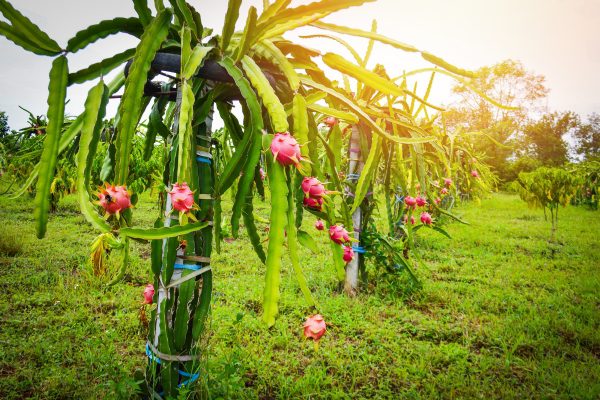
Tropical fruits evolved under intense equatorial sun, making adequate light crucial for flowering and fruiting. Most require 6-8 hours of direct sunlight outdoors or 12-14 hours under grow lights indoors.
South-facing windows provide maximum natural light, but even these may prove insufficient during winter months. Modern LED grow lights solve this problem efficiently. Look for full-spectrum lights providing 2000-3000 lumens per square foot. The Cornell University Controlled Environment Agriculture program recommends positioning lights 12-24 inches from plant tops.
Light quality matters as much as quantity. Tropical fruits need both blue spectrum light (for vegetative growth) and red spectrum light (for flowering and fruiting). Many growers report success with simple shop lights combining 6500K and 3000K LED bulbs.
Temperature consistency proves more important than absolute warmth for most tropical fruits. Sudden drops below species-specific thresholds trigger leaf drop, flower abortion, and even death. Maintain minimum temperatures above 55°F for most species, though some tolerate brief dips to 45°F.
Humidity presents the biggest challenge for indoor growers. Tropical fruits prefer 50-70% humidity, while most homes hover around 30-40%. Increase humidity through several methods:
Monitor both factors with digital thermometer-hygrometer combinations. Place sensors at plant level for accurate readings.
Proper watering requires balancing tropical fruits’ love of moisture with their need for oxygen at the roots. Water thoroughly when the top inch of soil feels dry, ensuring water drains freely from bottom holes. Never let plants sit in standing water.
Watering frequency varies dramatically by season, container size, and plant maturity. Small pots may need daily water in summer, while large containers might go a week between waterings in winter. Learn each plant’s rhythm rather than following rigid schedules.
Fertilization follows growth patterns. Feed actively growing plants every 2-4 weeks with balanced liquid fertilizer diluted to half strength. The University of Florida IFAS Extension recommends slow-release fertilizers for consistent nutrition. Reduce feeding in fall and winter when growth slows.
Strategic pruning keeps container tropical fruits productive and manageable. Summer pruning controls size more effectively than winter pruning, as it reduces regrowth vigor. Remove no more than 25% of growth in one session to avoid shocking plants.
Focus on three pruning goals:
Time pruning based on fruiting habits. Prune spring-flowering plants immediately after harvest. For continuous bloomers like citrus, prune lightly throughout the growing season.
Monthly Care Calendar for Tropical Container Fruits
| Month | Indoor Tasks | Outdoor Tasks |
| January | Minimal water, check for pests | Monitor protection (zones 8-9) |
| February | Increase water/light slightly | Prep for spring growth |
| March | Begin fertilizing, repot if needed | Remove winter protection |
| April | Increase feeding schedule | Begin moving plants outside |
| May | Transition outdoors gradually | Full feeding/watering schedule |
| June | – | Prune for size control |
| July | – | Peak water needs, watch for stress |
| August | – | Continue heavy feeding |
| September | Monitor for move indoors | Reduce fertilizer |
| October | Bring inside before first frost | Final harvest, protection prep |
| November | Reduce water/fertilizer | Apply winter mulch (zones 8-9) |
| December | Minimal care, monitor humidity | Check protection integrity |
Transform your tropical fruit dreams into reality with this systematic approach. Following these steps ensures success whether you’re growing one Meyer lemon or building a diverse collection.
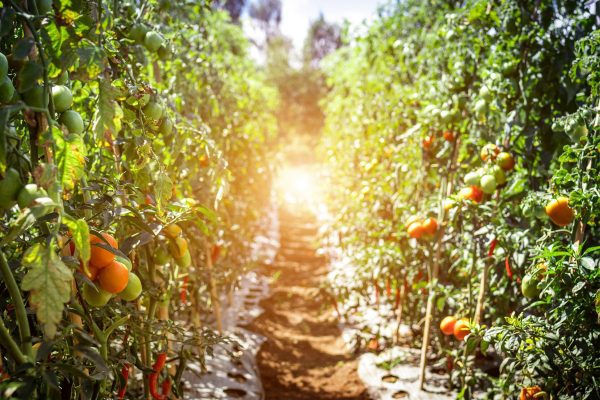
Honestly evaluate your resources before purchasing plants. Measure available space, both indoors and out. Count south-facing windows and note their dimensions. Check electrical outlets for grow lights. Test your commitment level—tropical fruits need consistent care.
Document temperature patterns in potential growing areas. Many gardeners discover their “sunny” window only receives 2-3 hours of direct light. Basements might maintain perfect winter temperatures but lack natural light. Understanding limitations helps you choose appropriate varieties and equipment.
Match plants to your conditions rather than forcing unsuitable varieties. Begin with one or two easy tropical fruit bush to grow options like strawberry guava or Meyer lemon. Success with forgiving varieties builds confidence for challenging species.
Research specific cultivars, not just species. ‘Dwarf Cavendish’ bananas suit containers better than standard varieties. ‘Glen’ mangoes fruit in pots while full-size varieties won’t. These details determine success or failure.
Purchase from reputable suppliers specializing in tropical fruits. Local nurseries often carry limited, poorly-labeled varieties. Online specialists like Logee’s Plants or One Green World offer extensive selections with detailed growing information.
Inspect plants carefully upon arrival. Look for:
Small plants often establish better than large specimens. A 6-inch pot typically outperforms a 3-gallon plant within two years due to reduced transplant shock.
Plant immediately into containers just one size larger than nursery pots. Use fresh, well-draining potting mix—never reuse old soil for new plants. Water thoroughly after planting to eliminate air pockets.
Quarantine new plants for 2-3 weeks before introducing them to your collection. This prevents spreading pests or diseases to established plants. Monitor closely during this period for any developing issues.
Establish consistent care habits from day one. Create reminders for watering checks, feeding schedules, and seasonal transitions. Many successful growers keep garden journals tracking growth, flowering, and fruiting patterns.
Start conservative with water and fertilizer, increasing as you learn each plant’s needs. Overcare kills more tropical fruits than neglect. Observe how plants respond to your care and adjust accordingly.
Even experienced gardeners face challenges when growing tropical fruits in home gardens. Recognizing and solving problems quickly prevents minor issues from becoming major setbacks.
Insufficient humidity causes multiple symptoms: brown leaf tips, flower drop, poor fruit set, and increased pest susceptibility. Most homes maintain 30-40% humidity while tropical fruits prefer 50-70%.
Implement multiple humidity-boosting strategies:
Avoid misting as the sole humidity solution. While temporarily helpful, frequent misting encourages fungal diseases without significantly raising ambient humidity.
Temperature stress appears as leaf yellowing, premature fruit drop, and stunted growth. Even brief exposure to temperatures below species minimums causes damage. Prevention beats treatment for temperature issues.
Create stable environments by:
When cold damage occurs, resist pruning immediately. Wait until spring growth reveals truly dead tissue, as plants often recover from portions appearing dead.
Container tropical fruits face fewer pest problems than outdoor plants but aren’t immune. Common indoor pests include spider mites, scale, mealybugs, and fungus gnats. Early detection and treatment prevent infestations.
Implement Integrated Pest Management (IPM):
Most diseases result from overwatering or poor air circulation. Ensure proper drainage, avoid overhead watering, and space plants adequately. Remove affected leaves promptly and improve growing conditions.
When healthy plants refuse to fruit, several factors might be responsible:
Immaturity: Many tropical fruits need 2-5 years to begin fruiting. Seed-grown plants take longer than grafted varieties. Patience often solves this “problem.”
Insufficient light: Fruiting requires more energy than vegetative growth. Plants surviving in low light rarely fruit. Increase light intensity through grow lights or better positioning.
Nutritional imbalances: Excess nitrogen promotes leaves over flowers. Switch to bloom-boosting fertilizers (lower nitrogen, higher phosphorus/potassium) during flowering season.
Lack of pollination: Some varieties need cross-pollination or hand-pollination indoors. Research your specific varieties’ needs. Use a small paintbrush to transfer pollen between flowers when necessary.
Container size: Ironically, overly large containers delay fruiting. Mild root restriction triggers reproductive maturity. Keep containers appropriately sized for plant size.
Creating a diverse collection becomes easier when you understand fruiting timelines. This comprehensive list of tropical fruits grow a garden enthusiasts can cultivate helps you plan for both quick gratification and long-term rewards.
These fast producers provide early success and maintain motivation while waiting for slower species. Most adapt well to containers and forgive beginner mistakes.
Citrus Family Champions:
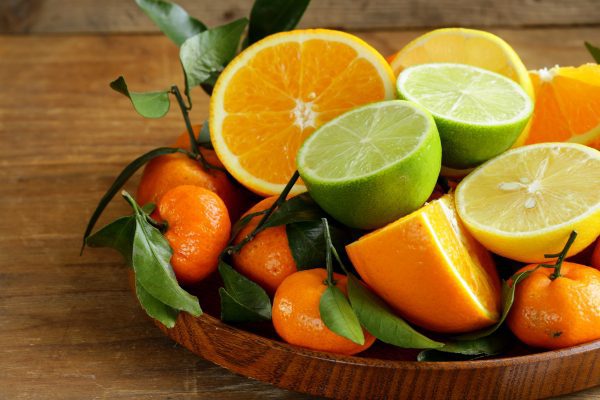
Tropical Favorites:
Quick Banana Varieties:
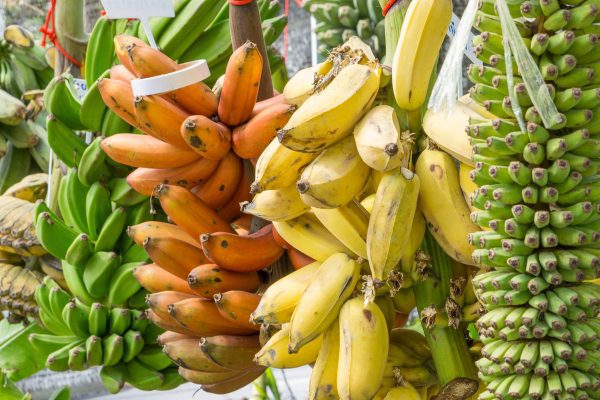
These fruits reward patient gardeners with premium harvests. Most reach productive maturity just as your skills peak from growing easier species.
Premium Fruits:
Underappreciated Gems:
These investment plants become family heirlooms, producing for decades with proper care. While requiring patience, their eventual productivity justifies the wait.
Tropical Icons:
Cold-Hardy Surprises:
Planting Timeline Guide:
| Fruit Type | Container Size | Years to Fruit | Special Needs |
| Citrus (dwarf) | 15-20 gallons | 1-2 years | High light, regular feeding |
| Bananas | 20-30 gallons | 1-2 years | Heavy feeder, high humidity |
| Guava | 15-25 gallons | 2-3 years | Tolerates some cold |
| Mango (dwarf) | 25-40 gallons | 3-5 years | Consistent warmth |
| Avocado | 25-40 gallons | 3-5 years | Perfect drainage |
| Jackfruit | 40+ gallons | 5-7 years | Space, warmth, patience |
Starting a tropical fruit garden doesn’t require massive investment. Understanding costs helps you budget effectively and recognize the long-term value.
Basic Starter Setup ($150-300):
Intermediate Setup ($300-600):
Advanced Collection ($600+):
Start from Seeds or Cuttings: Many tropical fruits grow easily from seed, though they take longer to fruit. Passion fruit, citrus, and guavas germinate readily. Trade cuttings with other growers through local garden clubs or online forums.
Buy Small, Grow Big: Six-inch pots cost $15-20 versus $50-75 for 3-gallon specimens. Smaller plants establish faster and often overtake larger transplants within two years. The American Society for Horticultural Science confirms smaller transplants show superior long-term performance.
DIY Solutions:
Seasonal Shopping: Buy tropical plants in late summer when nurseries clear inventory. Many retailers discount tropicals 50-75% in September-October. Overwintering small plants costs less than buying large specimens in spring.
Calculate your investment return through grocery store comparisons:
Annual Production Estimates:
Beyond monetary value, consider:
Most container tropical fruits pay for themselves within 2-3 years of production. Premium fruits like mangoes or specialty citrus offer even higher returns compared to store prices.
Absolutely! Thousands of gardeners successfully grow a garden tropical fruits in zones 4-7 using container culture and indoor overwintering. The key is selecting appropriate varieties and providing proper winter care. Start with cold-tolerant options like Meyer lemons, kumquats, or strawberry guavas. Move plants indoors before first frost and provide adequate light, warmth, and humidity through winter.
Meyer lemon consistently ranks as the easy tropical fruit bush to grow for newcomers. It adapts well to containers, tolerates indoor conditions, and fruits year-round with minimal care. Other beginner-friendly options include strawberry guava (very forgiving), dwarf bananas (fast results), and pineapples (novel and low-maintenance). Choose based on your available space and light conditions.
Fruiting time varies significantly by species and growing method:
Grafted plants fruit years earlier than seed-grown specimens. Container culture often triggers earlier fruiting through controlled root restriction.
No, a greenhouse isn’t necessary for growing tropical fruits in home gardens. Many gardeners succeed with sunny windows, supplemental grow lights, and proper humidity management. A spare room, enclosed porch, or basement with grow lights works perfectly. Greenhouses offer advantages but require additional investment and maintenance. Start simple and upgrade if your collection outgrows indoor space.
Container size depends on the mature plant size and your management goals:
Remember the counterintuitive rule: slightly undersized containers promote earlier fruiting. Upgrade pot sizes gradually (2-3 inches diameter increase) rather than making large jumps. This technique encourages fruit production over excessive vegetative growth.
Tropical fruit gardening is achievable anywhere with proper variety selection, container growing techniques, and dedicated care. Whether you’re dreaming of fresh Meyer lemons in Minnesota or homegrown mangoes in Seattle, the techniques in this guide make it possible.
The journey from curious beginner to successful tropical fruit gardener follows a predictable path. Start with one easy variety like Meyer lemon or dwarf banana, master its care, then gradually expand your collection. Each success builds confidence and skills for more challenging species. Within a few years, you’ll enjoy regular harvests of fruits most neighbors think impossible to grow in your climate.
Remember that all tropical fruits in grow a garden settings share basic needs: adequate light, consistent warmth, proper humidity, and well-draining soil. Master these fundamentals and adjust for individual species preferences. Join online communities, connect with local tropical fruit enthusiasts, and share your experiences.
Your tropical paradise awaits—one container at a time. Start with one easy variety like Meyer lemon or dwarf banana, and expand your tropical paradise as you gain confidence. The sweet rewards of homegrown mangoes, guavas, and passion fruits justify every moment invested in their care.
